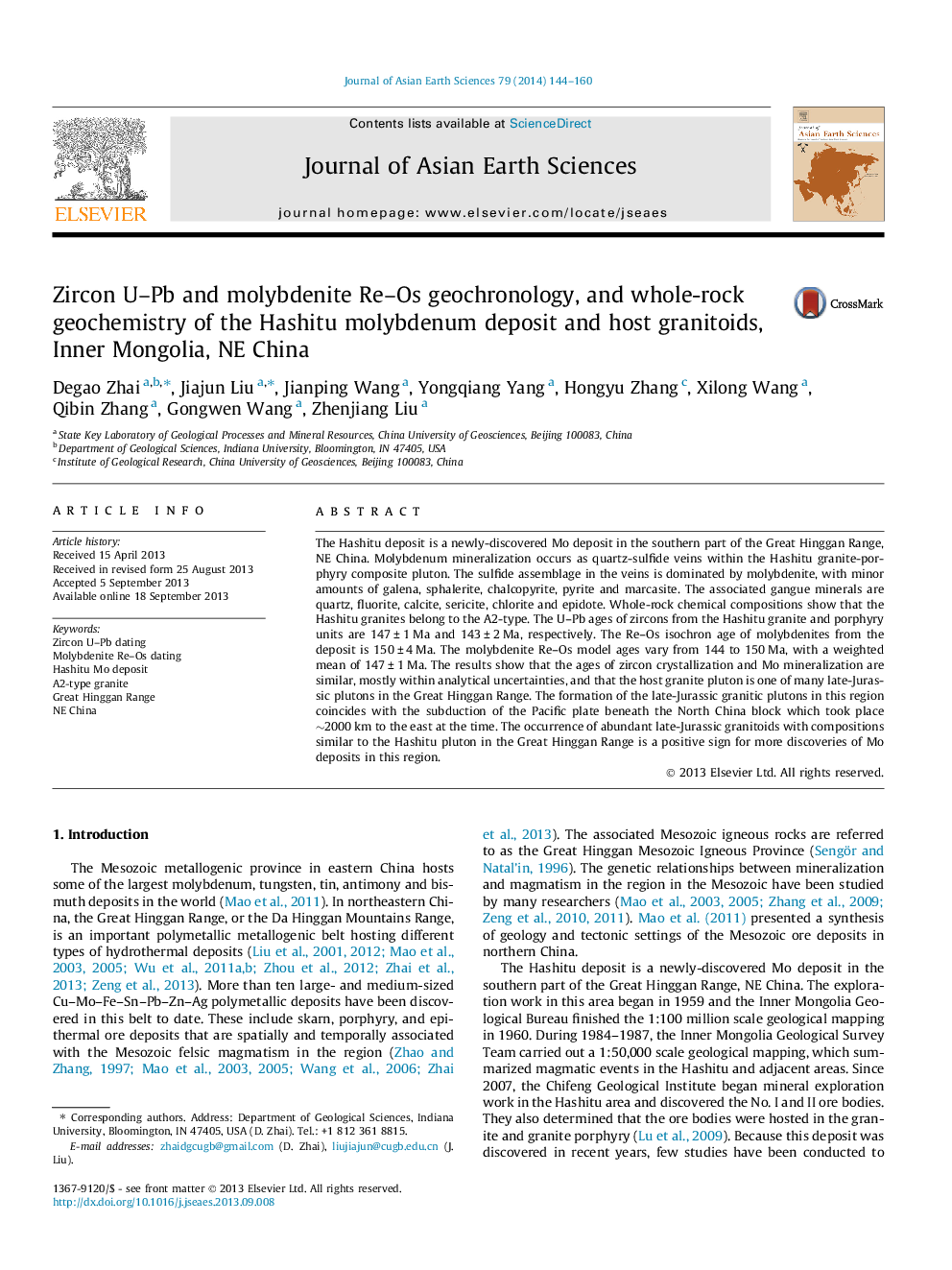| کد مقاله | کد نشریه | سال انتشار | مقاله انگلیسی | نسخه تمام متن |
|---|---|---|---|---|
| 4730897 | 1356785 | 2014 | 17 صفحه PDF | دانلود رایگان |
• The Hashitu deposit is a newly-discovered Mo deposit in NE China.
• The ore bodies are hosted in A2-type granites.
• The ages of the Hashitu granite and porphyry are 147 ± 1 Ma and 143 ± 2 Ma.
• The Re–Os age of molybdenite is 150 ± 4 Ma.
• The granites formed in a distal back arc setting.
The Hashitu deposit is a newly-discovered Mo deposit in the southern part of the Great Hinggan Range, NE China. Molybdenum mineralization occurs as quartz-sulfide veins within the Hashitu granite-porphyry composite pluton. The sulfide assemblage in the veins is dominated by molybdenite, with minor amounts of galena, sphalerite, chalcopyrite, pyrite and marcasite. The associated gangue minerals are quartz, fluorite, calcite, sericite, chlorite and epidote. Whole-rock chemical compositions show that the Hashitu granites belong to the A2-type. The U–Pb ages of zircons from the Hashitu granite and porphyry units are 147 ± 1 Ma and 143 ± 2 Ma, respectively. The Re–Os isochron age of molybdenites from the deposit is 150 ± 4 Ma. The molybdenite Re–Os model ages vary from 144 to 150 Ma, with a weighted mean of 147 ± 1 Ma. The results show that the ages of zircon crystallization and Mo mineralization are similar, mostly within analytical uncertainties, and that the host granite pluton is one of many late-Jurassic plutons in the Great Hinggan Range. The formation of the late-Jurassic granitic plutons in this region coincides with the subduction of the Pacific plate beneath the North China block which took place ∼2000 km to the east at the time. The occurrence of abundant late-Jurassic granitoids with compositions similar to the Hashitu pluton in the Great Hinggan Range is a positive sign for more discoveries of Mo deposits in this region.
Journal: Journal of Asian Earth Sciences - Volume 79, Part A, 5 January 2014, Pages 144–160
